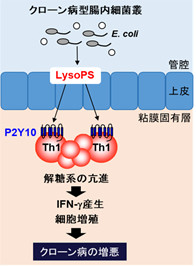ウイルスゲノムは通常、感染パートナー間で共有されていますが、治療に影響を与えるような違いが生じることがあります。 Viral genomes are generally shared between transmission partners, although differences can arise that might impact treatment.
2022-05-24 ペンシルベニア州立大学(PennState)
この研究成果を記した論文は、『PLoS Pathogens』誌のオンライン版に掲載されています。
<関連情報>
- https://www.psu.edu/news/eberly-college-science/story/does-herpes-simplex-virus-change-during-transmission/
- https://journals.plos.org/plospathogens/article?id=10.1371/journal.ppat.1010437
性器感染した成人の性感染パートナー間における単純ヘルペスウイルス1ゲノム多様性の比較 Comparison of herpes simplex virus 1 genomic diversity between adult sexual transmission partners with genital infection
Molly M. Rathbun,Mackenzie M. Shipley,Christopher D. Bowen,Stacy Selke,Anna Wald,Christine Johnston,Moriah L. Szpara
PLoS Pathogens Published: May 19, 2022
DOI:https://doi.org/10.1371/journal.ppat.1010437
Abstract
Herpes simplex virus (HSV) causes chronic infection in the human host, characterized by self-limited episodes of mucosal shedding and lesional disease, with latent infection of neuronal ganglia. The epidemiology of genital herpes has undergone a significant transformation over the past two decades, with the emergence of HSV-1 as a leading cause of first-episode genital herpes in many countries. Though dsDNA viruses are not expected to mutate quickly, it is not yet known to what degree the HSV-1 viral population in a natural host adapts over time, or how often viral population variants are transmitted between hosts. This study provides a comparative genomics analysis for 33 temporally-sampled oral and genital HSV-1 genomes derived from five adult sexual transmission pairs. We found that transmission pairs harbored consensus-level viral genomes with near-complete conservation of nucleotide identity. Examination of within-host minor variants in the viral population revealed both shared and unique patterns of genetic diversity between partners, and between anatomical niches. Additionally, genetic drift was detected from spatiotemporally separated samples in as little as three days. These data expand our prior understanding of the complex interaction between HSV-1 genomics and population dynamics after transmission to new infected persons.


